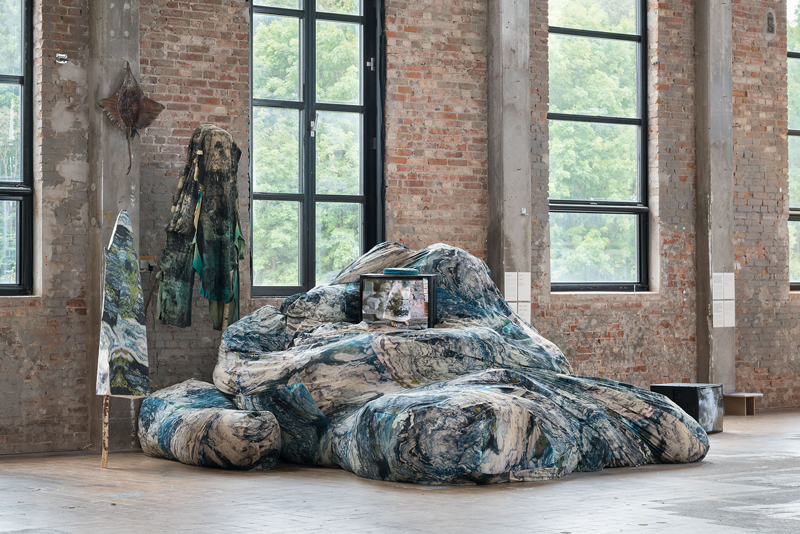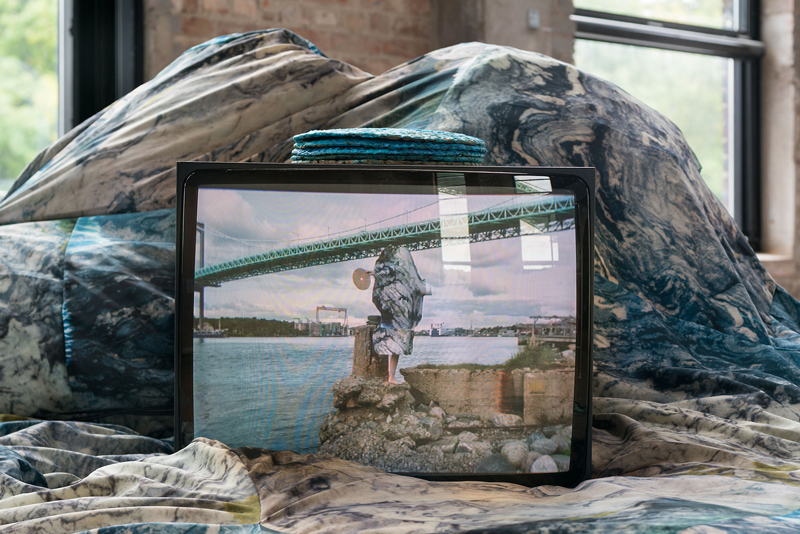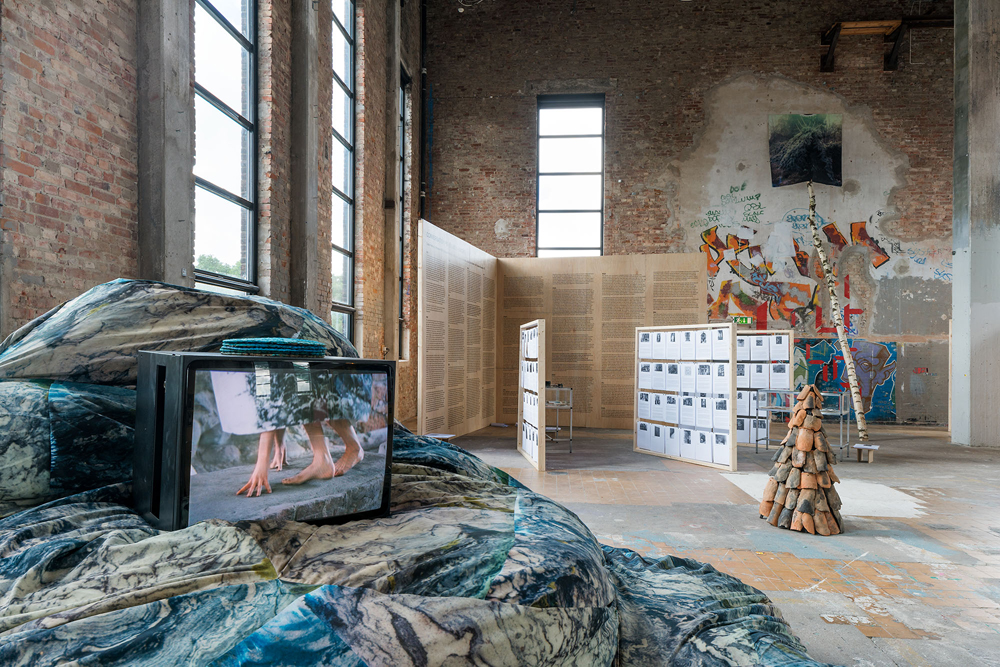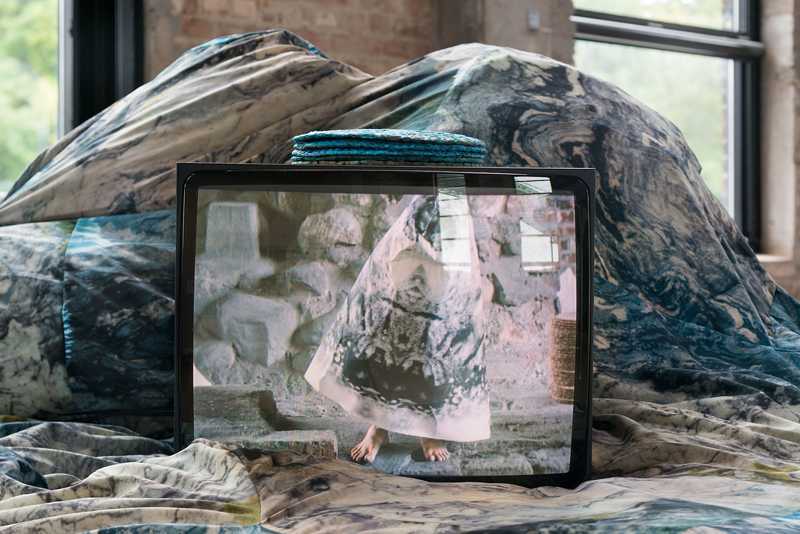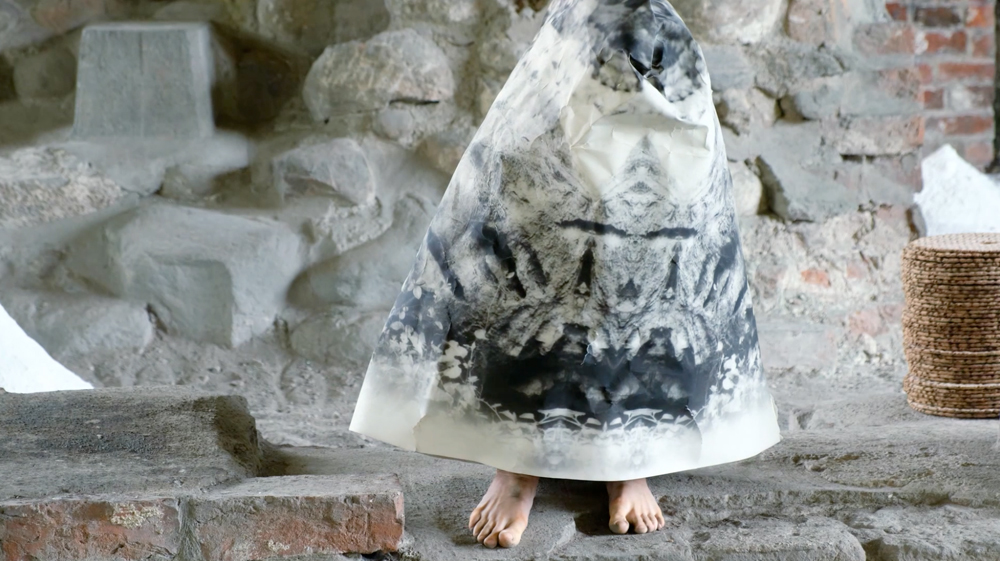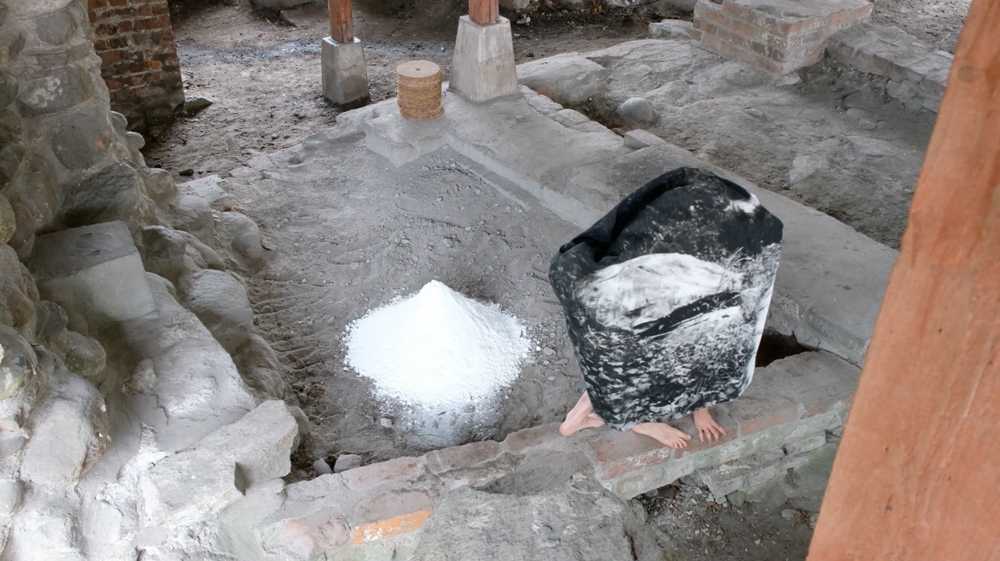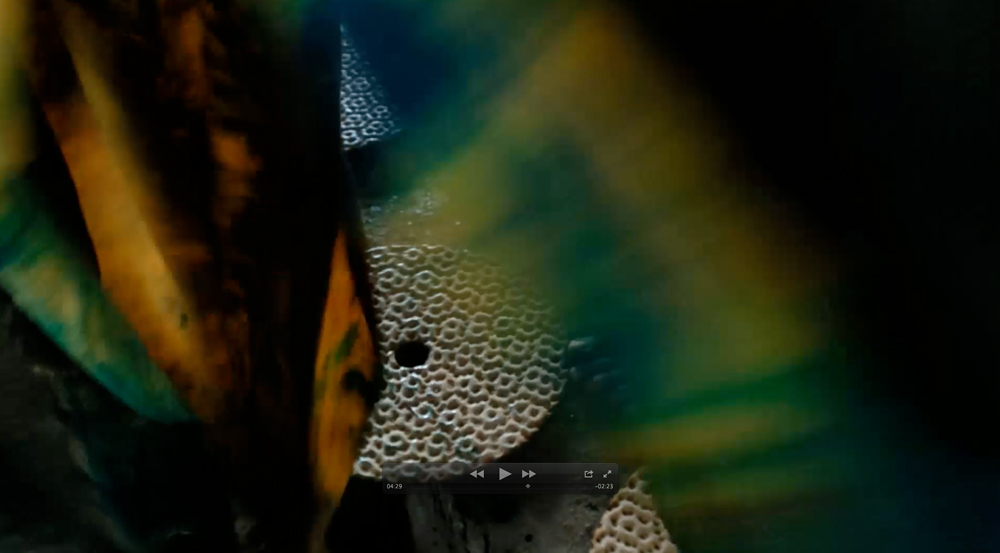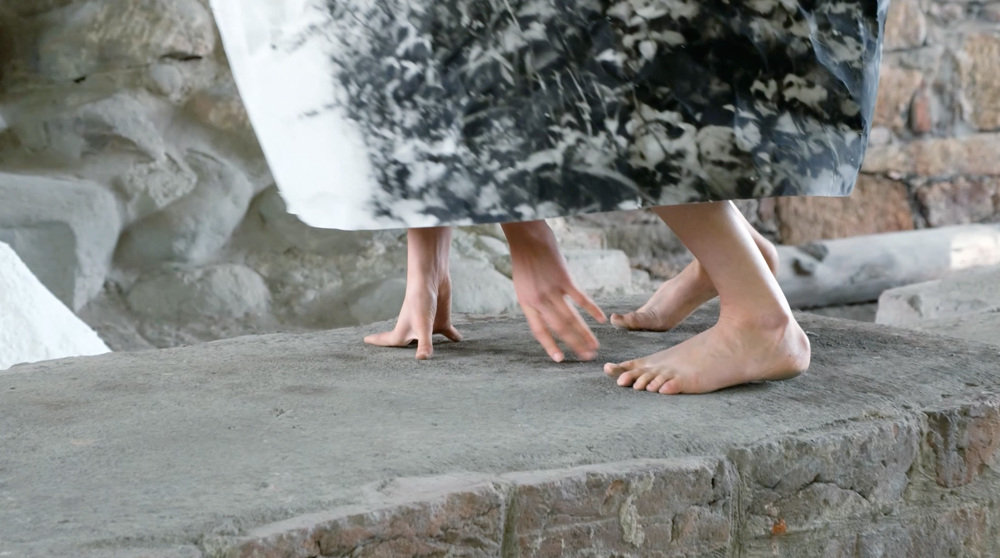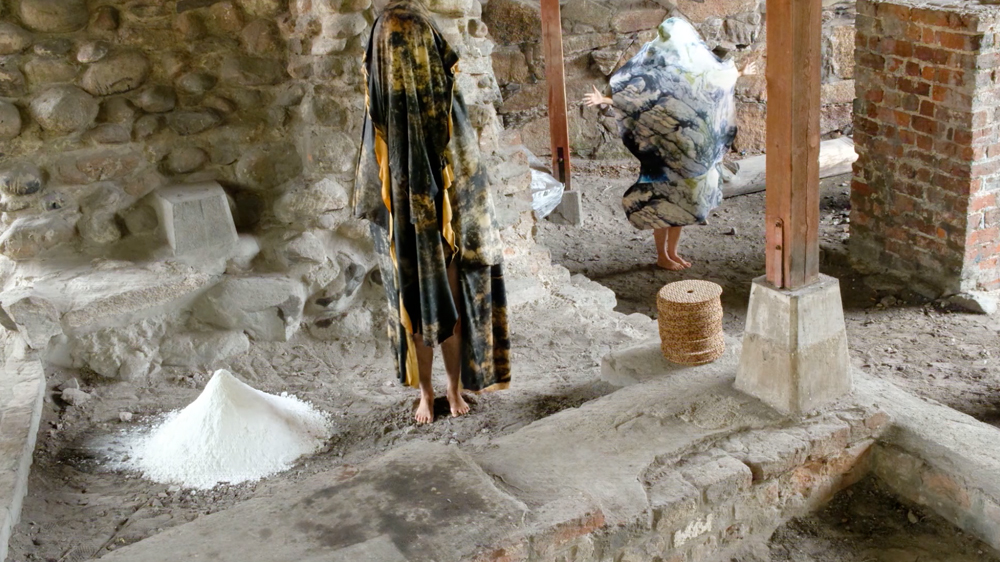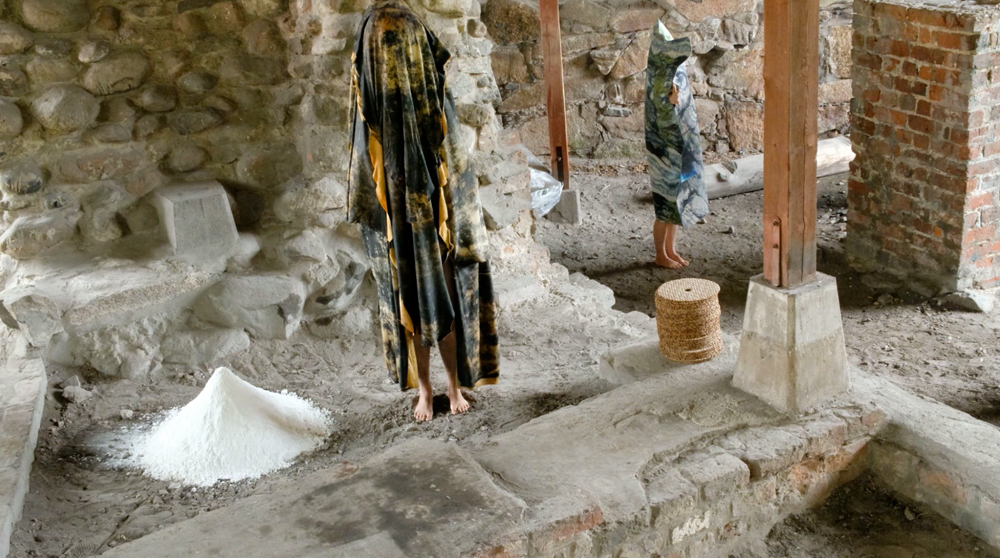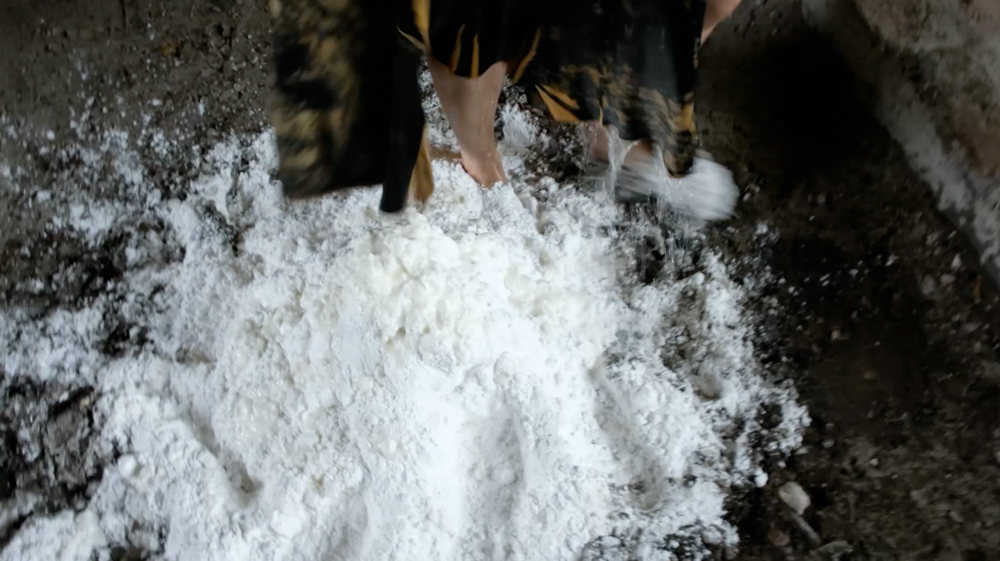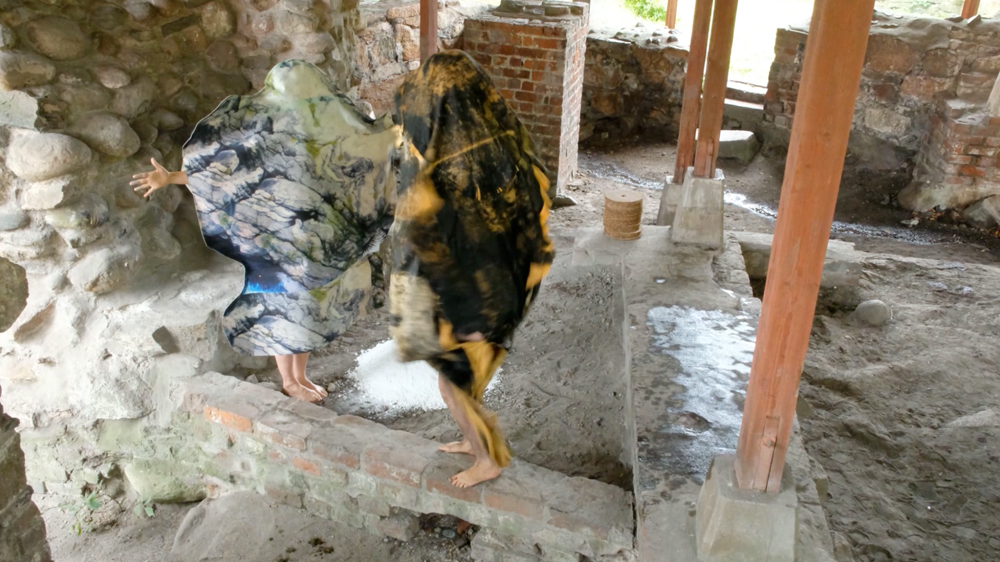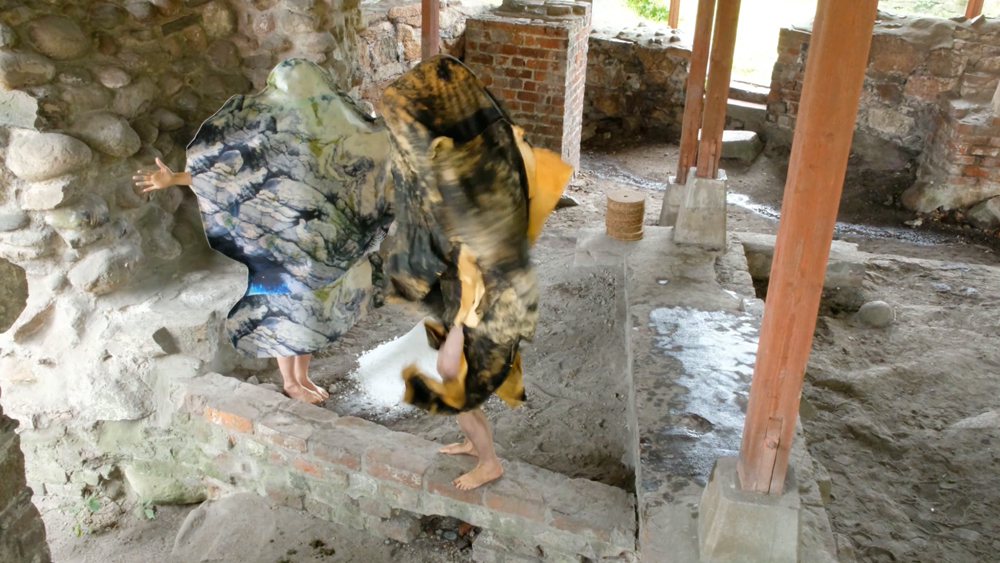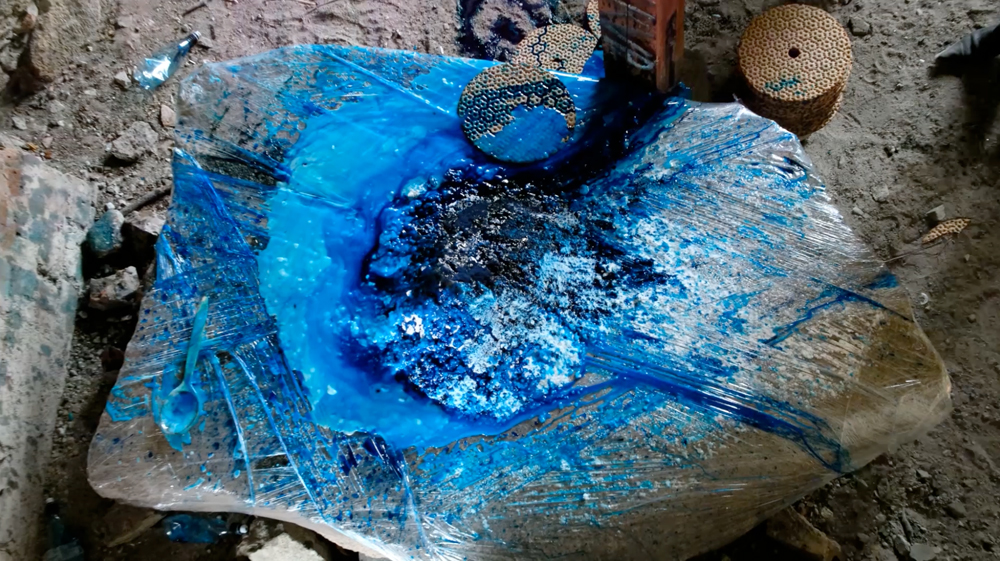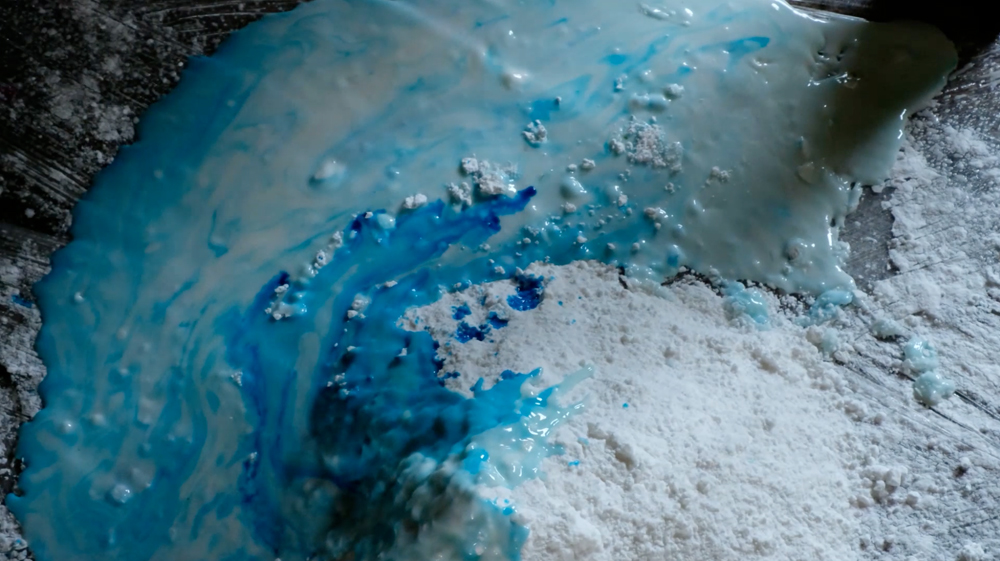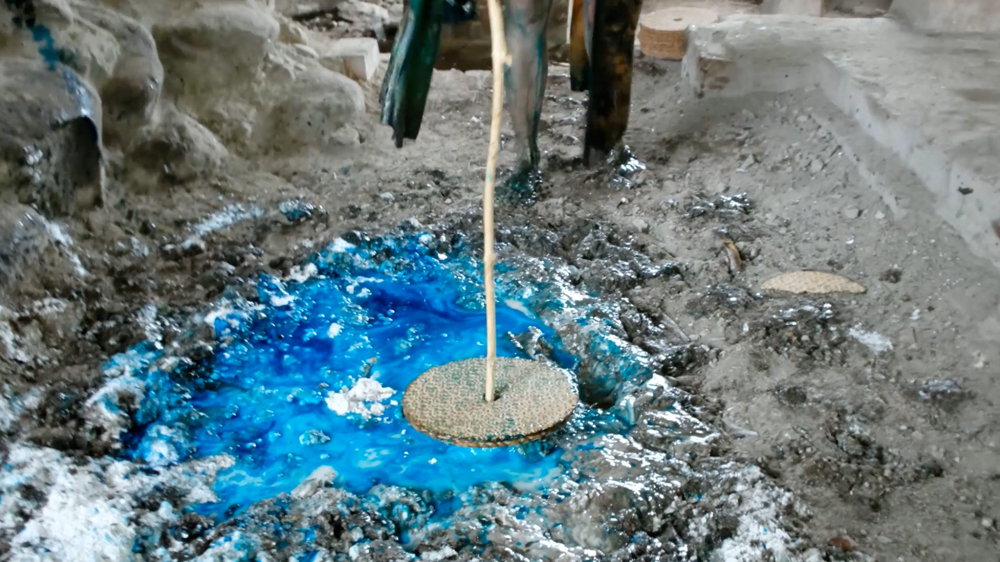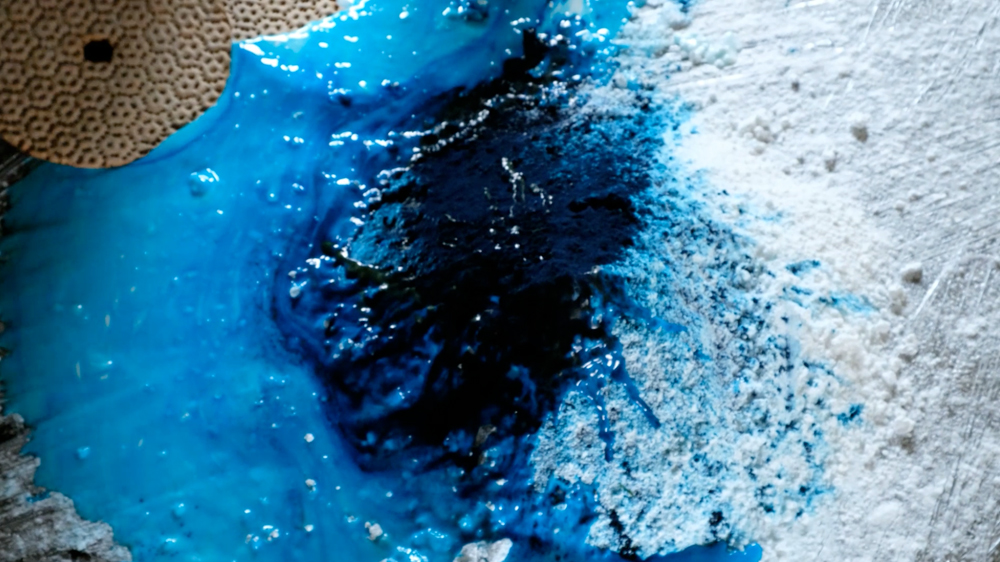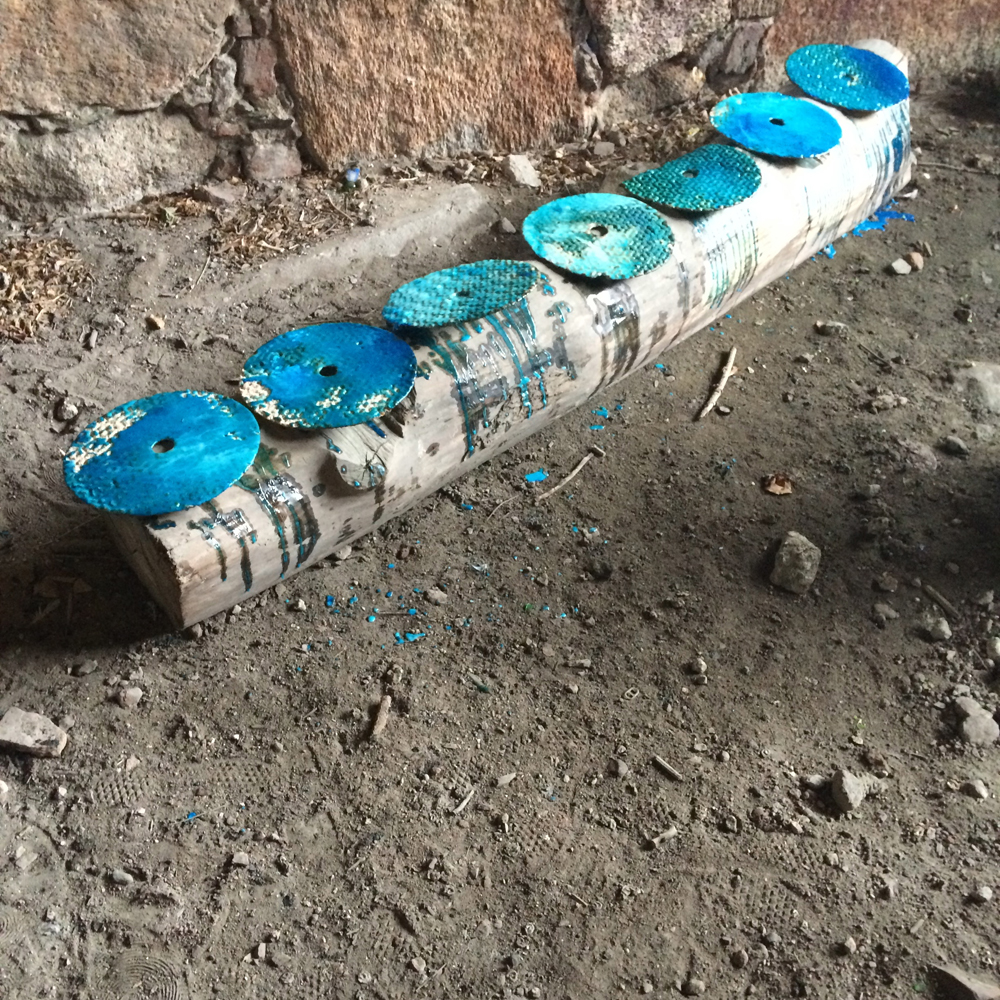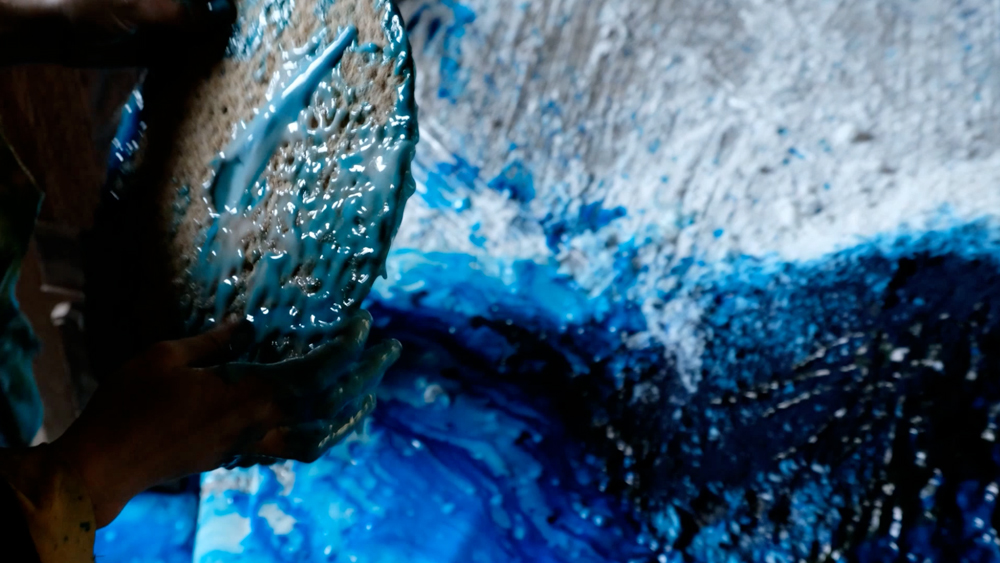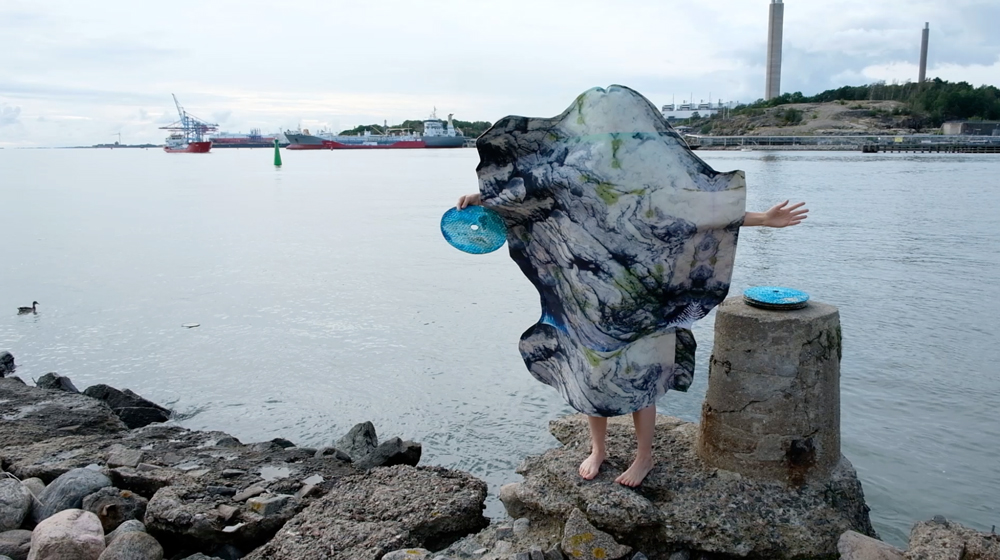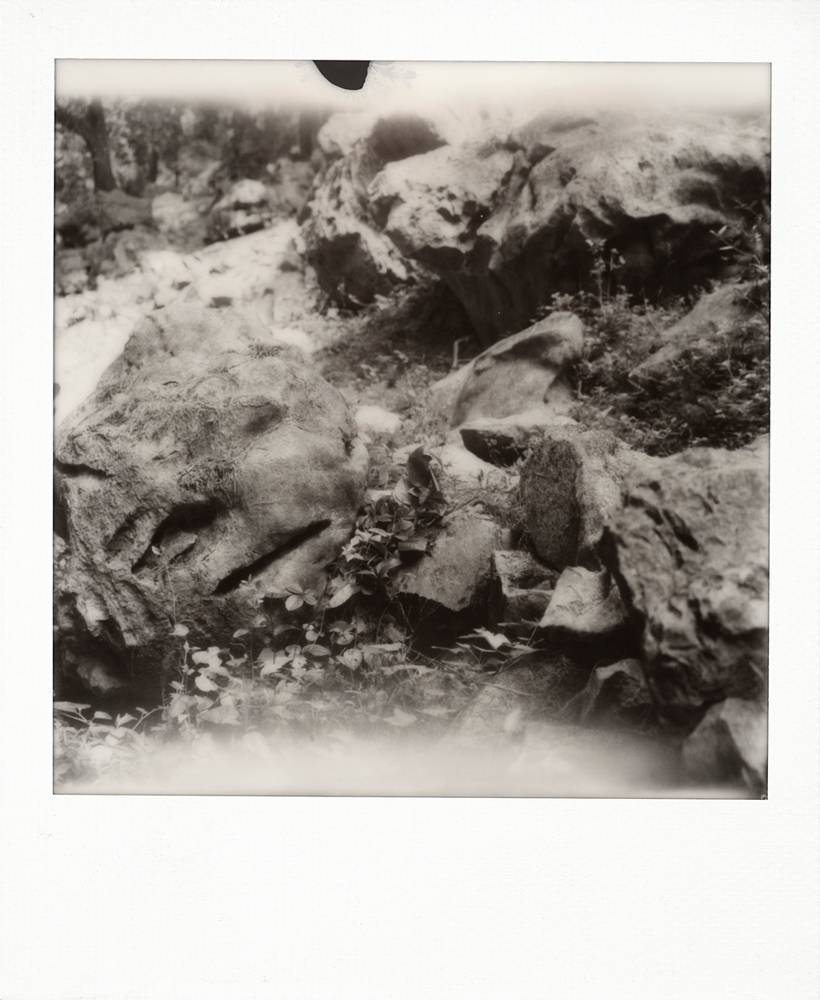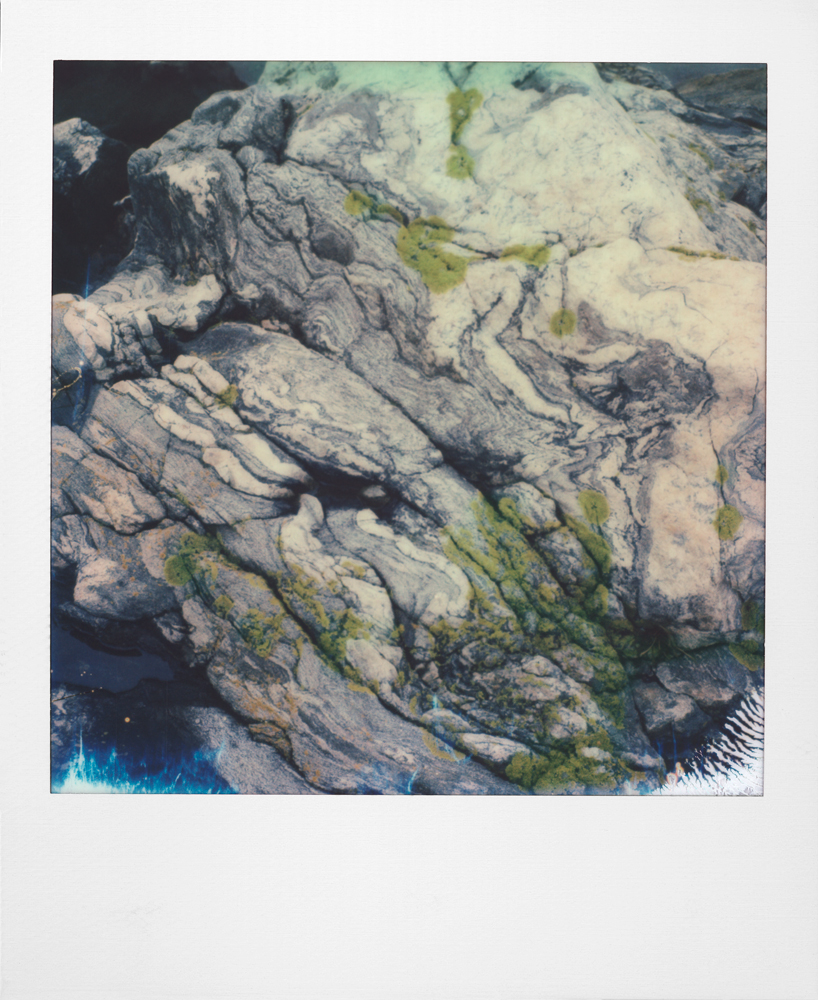Jenny Haniver 09/09 - 19/11/2017 GIBCA 2017
27/01 - 15/04/2018 CC Mechelen
Michèle Matyn has developed a multifaceted practice incorporating photography, sculpture and performance. Her works considers the ways myths, folklore and religiosity are formed, often through our perception of and interaction with nature. Matyn’s works often begins with a journey, normally to locations unfamiliar to the artist and with little sign of human interference, encountering places and situations that might inspire belief in the supernatural and the unknown. Her works typically feel ‘homespun’, evoking esoteric culture as well as the anthropomorphic gaze onto the outer world.
The crux of Matyn’s work lies in the search for the intersection where humanity’s capacity for philosophical projection meets the natural world (with its own existence outside of human consciousness).
Matyn has produced a body of photographs and sculptures – often used for performances – that depict natural forms and shrines, which consider objects and environments as living entities. Her display brings together these different forms, characters and encounters, many of which related to the roles and responsibilities of women in a society.
The artist has also used the space between the Röda Sten Konsthall and the sea as a setting for a new performance, the remnants of which are to be found here. The performance using the costumed characters Drool, Very Very Happy and Difficult Road I & II considers the historic folk art-based myth of the Jenny Haniver – the carcass of a ray that has been modified and dried, resulting in a grotesque devil-like specimen believed in 16th century Belgium ports to possess magical power. It is thought the name Jenny Haniver emerged through a British sailor’s linguistic interpretation of the phrase jeune d'Anvers (“young person of Antwerp”). The Jenny Haniver is used here as a votive offering to be returned to the sea, restoring balance in the world.
A photograph of a shrine for women in the Caucasus mountains, a region with strong pre-Abrahamic pagan beliefs, is the focal point of the works Made Mayrem 1 & 2. The coloured strips of cloth tied to foliage at the mouth of a well form a place of worship, a portal to another dimension. Rolled up and attached to willow sticks, the images convey the human desire for philosophical sustenance.
The sculpture Bilpannen (English: Thigh-Tiles) is a sculpture made through a performance ritual Matyn made together with six other women, who all together form the “14 thighs”. They produced the tiles by shaping clay over their thighs, before baking them in a paper kiln. This method of making tiles has origins in pre-industrial tile-making techniques by women in rural regions of Europe. The tiles use the physiognomy of the woman’s body to create protective structures.
Nav Haq
Commissioned by the Göteborg International Biennial of Contemporary Art
http://gibca.se/index.php/en/2017/thematic
Supported by:
The Flemish Community

http://www.cultuurcentrummechelen.be/tentoonstellingen/2017-2018/photo-friction
